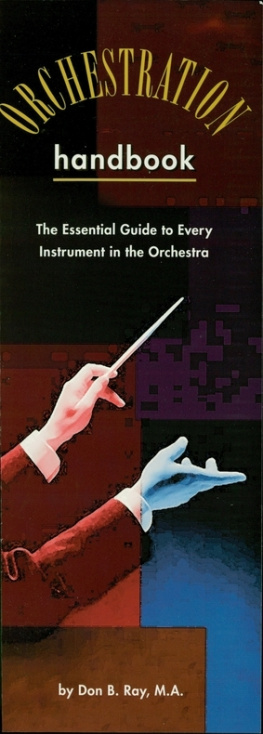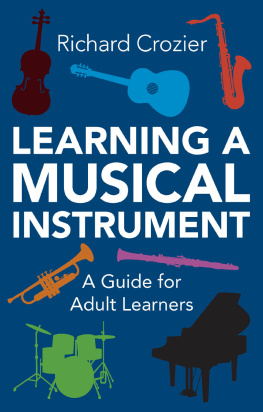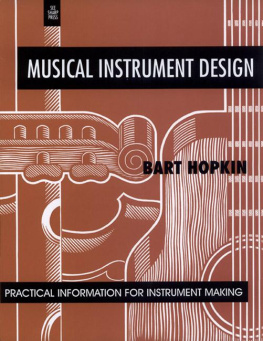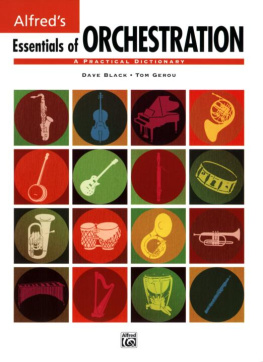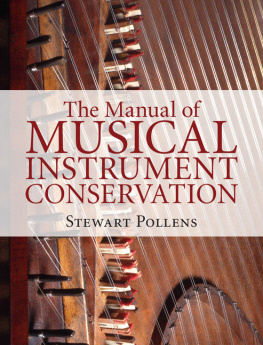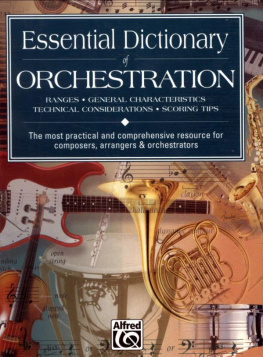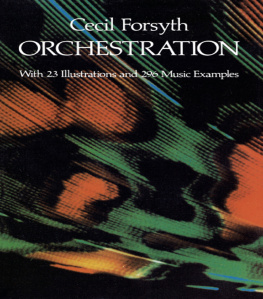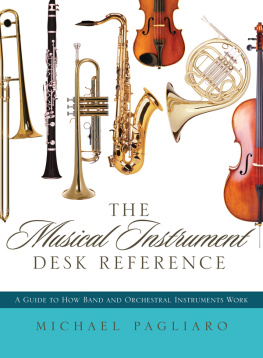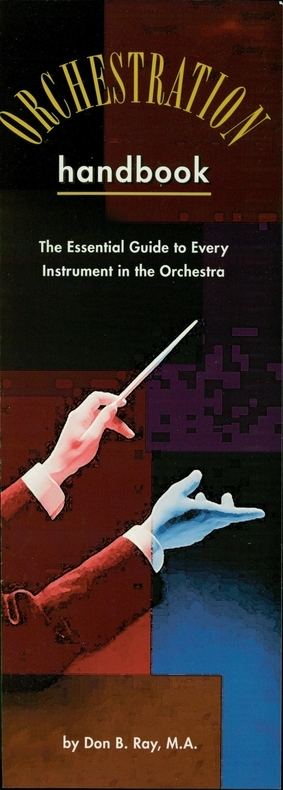About the Author
Born and raised in Southern California, Don B. Ray got his B.A. at UCLA and his M.A. from California State University, Long Beach. In 1956 he joined the CBS Network Music Department, where he remained until his retirement. As Music Supervisor, he was responsible for the music on Playhouse , The Twilight Zone, Gunsmoke, Rawhide, and Hawaii Five-O, the latter bringing an Emmy nomination for Best Dramatic Score in 1974.
In 1980 he created the Film Scoring Program at UCLAs Department of the Arts (and was named Outstanding Instructor in that department in 1984). During this period, he was also a guest lecturer at the University of London. In 1997, he was invited to recreate the UCLA program in Dublin, Ireland. He now spends part of each year in Dublin. Ray is married, has one son, and lives in Southern California.
winds saxophones brass
PICCOLO IN C
Range:
Clef: treble
Transposition: sounds an octave higher than written
Timbre:
Lower range : good but unexploited register; poor projection
Middle range : good quality and control
Upper range : penetrating and brilliant
General characteristics:
- agile and requires little breath
- intonation can be a problem
Special effects:
Flutter: A sound produced on one pitch similar in quality to the cooing of a dove, indicated thus:
Trill: Rapid alternation between written note and neighboring upper note of scale (if music is tonal). Otherwise an accidental at right of sign indicates whether upper note is sharp, natural or flat; indicated thus:
Wider trills between non-adjoining notes are indicated thus:
FLUTE
Range:
Clef: treble
Transposition: sounds as written
Timbre:
Low range: dark, haunting sound
Middle range: sonorous quality but poor projection
Upper range: bright, carrying sound
High range: bright, penetrating quality
Characteristics:
- very agile throughout range
- the lower the register, the more breath required
Special effects: same as piccolo
ALTO FLUTE
Range:
Clef: treble
Transposition: sounds a perfect fourth lower than written
Timbre:
Low range: haunting, throaty, soft
Middle range: rich, throaty sound
Upper range: good quality; projects
Characteristics: same as flute, but uses considerably more breath
Special effects: same as piccolo except that flutter is ineffective in low and middle registers
OBOE
Range:
Clef: treble
Transposition: sounds as written
Timbre:
Lower range: rich, exotic sound; difficult to play softly
Middle range: characteristic color
Upper range: thin and tentative near top; loses volume
Characteristics:
- very agile throughout register
- requires little breath
- particularly expressive instrument
Special effects: see piccolo: Special Effects: Trills
ENGLlSH HORN
Range:
Clef: treble
Transposition: sounds a perfect fifth lower than written
Timbre:
Low range: dark, sensuous sound; difficult to play softly
Middle range: like oboe but more resonant
Upper range: like oboe but more projected sound
Characteristics: same as oboe; less agile
Special effects: see piccolo: Special Effects: Trills
CLARINET IN B

Range:
Clef: treble
Transposition: sounds a whole step lower than written
Timbre:
Low range: rich throaty sound
Middle range: not much projection
Upper range: bright; good projection
High range: shrill, penetrating
Characteristics: good volume control except in lowest register, which also requires considerable breath
Special effects:
Sub-tone: a soft, whispered tone; best in low and mid-register
Trill: see piccolo: Special Effects
Glissando: ascending glissando possible; best in upper register
CLARINET IN A
Note: Same as clarinet in B  except that range is half-step lower and instrument sounds a minor third lower than written. Rarely used today, although common in nineteenthcentury French music.
except that range is half-step lower and instrument sounds a minor third lower than written. Rarely used today, although common in nineteenthcentury French music.
CLARINET IN E

Note : Same as clarinet in B  except that fundamental is a fourth higher. E
except that fundamental is a fourth higher. E  clarinet sounds a minor third higher than written.
clarinet sounds a minor third higher than written.
BASS CLARINET IN B

Range:
Clef: treble only
Transposition: sounds a major ninth lower than written
Timbre:
Low range: dark, resonant, haunting
Upper range: bright, projective
Characteristics:
- requires considerable breath, especially in low register

